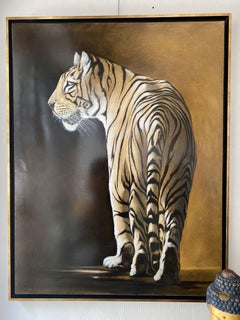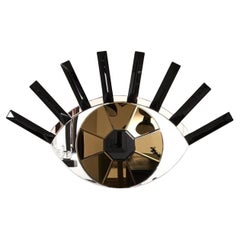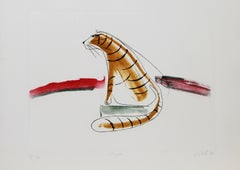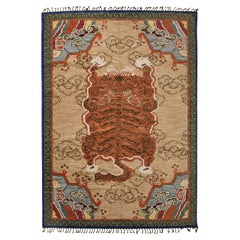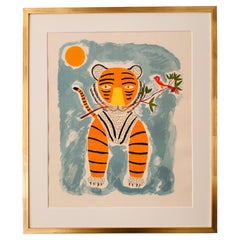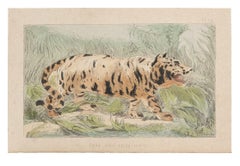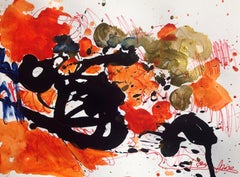The Tiger
2010s Animal Paintings
Oil
2010s Danish Post-Modern Wall Mirrors
Mirror
1970s Folk Art Animal Prints
Etching
2010s Indian Indian Rugs
Wool
Vintage 1970s French Prints
Paper
Mid-20th Century Modern Figurative Drawings and Watercolors
Charcoal
1970s Modern Figurative Prints
Lithograph
21st Century and Contemporary Paintings
Acrylic
21st Century and Contemporary Impressionist Interior Paintings
Canvas, Oil
21st Century and Contemporary Contemporary Photography
Silver Gelatin
1930s Art Deco Figurative Sculptures
Bronze
2010s American Ottomans and Poufs
Velvet
21st Century and Contemporary Contemporary Animal Prints
Paper, Screen
2010s Contemporary Animal Drawings and Watercolors
Ink
Vintage 1970s French Prints
Paper
1990s Contemporary Figurative Prints
Lithograph
Early 20th Century Japanese Chinoiserie Tapestries
Silk
21st Century and Contemporary Pop Art Paintings
Acrylic
1930s Figurative Paintings
Canvas, Oil
1930s Surrealist Figurative Paintings
Oil, Panel
2010s Surrealist Animal Paintings
Oil, Wood Panel
Early 2000s Contemporary Black and White Photography
Archival Pigment
Early 2000s Contemporary Black and White Photography
Archival Pigment
Mid-20th Century Impressionist Figurative Paintings
Watercolor
2010s Contemporary Figurative Drawings and Watercolors
Acrylic
21st Century and Contemporary Portuguese Animal Sculptures
Silver, Sterling Silver
2010s American Cufflinks
Tiger's Eye, 18k Gold, Yellow Gold
Antique Late 19th Century Art Deco Brooches
Gold Plate
2010s Realist Animal Paintings
Oil, Wood Panel
21st Century and Contemporary Indian Contemporary Loose Gemstones
Tiger's Eye
20th Century Italian Modern Cocktail Rings
Tiger's Eye, Yellow Gold, 18k Gold
2010s British Drop Earrings
Tiger's Eye, Sterling Silver
21st Century and Contemporary American Beaded Necklaces
Tiger's Eye, Gold Plate, Sterling Silver
21st Century and Contemporary South African Modern Animal Sculptures
Ceramic
Vintage 1960s Italian Retro Bangles
Diamond, Tiger's Eye, 18k Gold, Yellow Gold
2010s British Beaded Necklaces
Tiger's Eye, Gold Plate, Brass
Late 20th Century Unknown Modern Pendant Necklaces
Ruby, Tiger's Eye, 14k Gold, White Gold, Yellow Gold
Early 20th Century American Art Deco Cocktail Rings
Tiger's Eye, Gold, 10k Gold, White Gold, Yellow Gold
Antique 1830s Prints
Paper
Late 20th Century Modern Bracelets
Freshwater Pearl, 18k Gold, Yellow Gold
2010s Italian Modern Vanity Items
Gold, Silver
21st Century and Contemporary Engagement Rings
Diamond, White Diamond, Tiger's Eye, Gold, 18k Gold, Yellow Gold
21st Century and Contemporary Italian Pillows and Throws
Textile, Satin
21st Century and Contemporary American Beaded Necklaces
Tiger's Eye, Gold Plate
Antique 1890s North American Victorian Pendant Necklaces
Diamond, Gold, 14k Gold, Enamel
21st Century and Contemporary American Modern Brooches
21st Century and Contemporary South African Modern Urns
Ceramic
Antique 19th Century English Paintings and Screens
Glass
2010s Italian Modern Pendant Necklaces
Yellow Sapphire, Diamond, Sapphire, Brown Diamond, Silver, Rhodium, Yell...
1990s French Fashion Rings
Tiger's Eye, 18k Gold, Yellow Gold
21st Century and Contemporary South African Modern Animal Sculptures
Ceramic
Vintage 1970s French Clip-on Earrings
Diamond, Tiger's Eye, 18k Gold, Yellow Gold
21st Century and Contemporary South African Modern Jewelry Boxes
Ceramic
21st Century and Contemporary American Beaded Necklaces
Tiger's Eye, Pearl
2010s Italian Artisan Pendant Necklaces
Diamond, Ruby, 18k Gold, Yellow Gold, Gold
Vintage 1950s French Animal Sculptures
Stone, Bronze
2010s Abstract Abstract Paintings
Gesso, Canvas, Linen, Varnish, Acrylic
- 1
- ...
- What is Tiger Oak?1 Answer1stDibs ExpertFebruary 22, 2021Contrary to its name, tiger oak is not a type of wood, rather, it's the product of a specific milling process called quarter sawing. The woods has a distinctive grain pattern that's considered quite high-end.
- What does tiger’s eye symbolize?1 Answer1stDibs ExpertApril 5, 2022What the gemstone tiger's eye symbolizes is largely a matter of personal interpretation. The ancient Egyptians associated it with the heavens. In the modern world, many people believe it represents strength and courage. On 1stDibs, find a range of tiger's eye gemstone jewelry.
- What is a Tiger Eye bracelet?1 Answer1stDibs ExpertOctober 12, 2021A tiger eye bracelet is a piece of jewelry featuring tiger’s eye stones, which can be worn around one’s wrist or arm. Popularly known as ‘stones of protection’, they are believed to bring peace and good luck to the wearer and are also used for healing psychosomatic illnesses. Shop a range of antique and modern bracelets on 1stDibs today.
- What is tiger oak furniture?1 Answer1stDibs ExpertApril 5, 2022Tiger oak furniture refers to tables, case goods, seating and other furnishings produced out of a specific type of wood called tiger oak. It is conventional oak wood that undergoes quarter sawing to create a striped grain pattern. Find a variety of tiger oak furniture on 1stDibs.
- What is tiger maple wood?1 Answer1stDibs ExpertApril 5, 2022Tiger maple wood goes by many other names, but most commonly it is called flame maple. It can also be called curly maple, ripple maple or fiddleback. It’s the striped pattern of this wood that gives it all of these descriptive names. Shop a collection of tiger maple furniture from some of the world’s top sellers on 1stDibs.
- Can tiger’s eye be carved?1 Answer1stDibs ExpertApril 5, 2022Yes, tiger's eye can be carved provided you have the necessary skill and possess suitable tools. Artisans carve tiger's eye to produce vases, keepsake boxes, beads, clocks and many other items. On 1stDibs, find a range of tiger's eye jewelry and decorative objects.
- How old is tiger oak furniture?1 Answer1stDibs ExpertApril 5, 2022Tiger oak furniture dates back to the 19th century, so it may be hard to pinpoint the exact age. The best way to date tiger oak furniture is to work with an appraiser. You’ll find expertly vetted tiger oak furniture and other wood furniture on 1stDibs.
